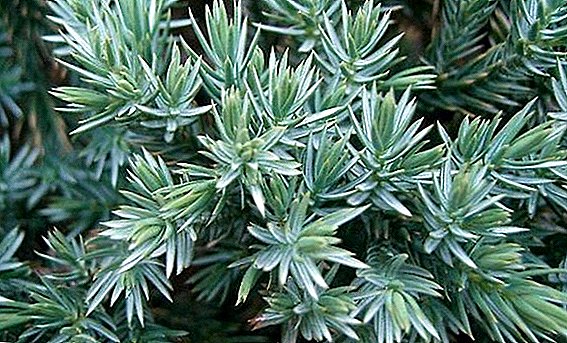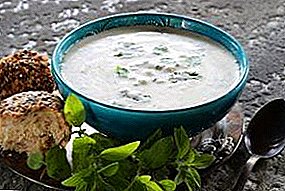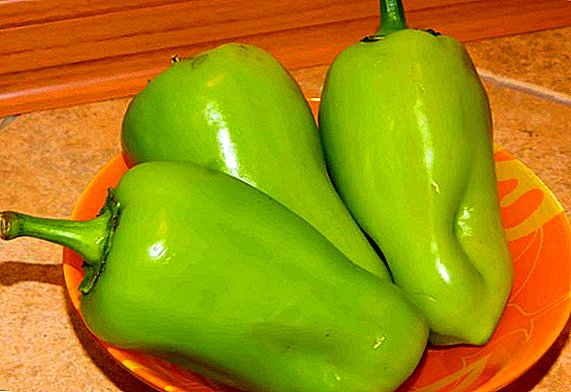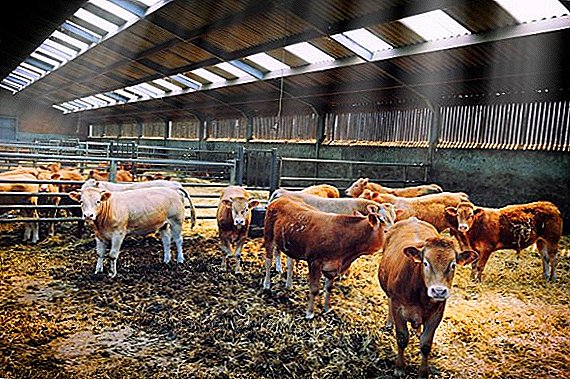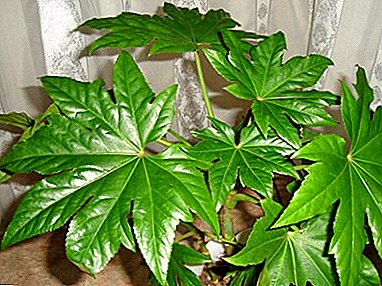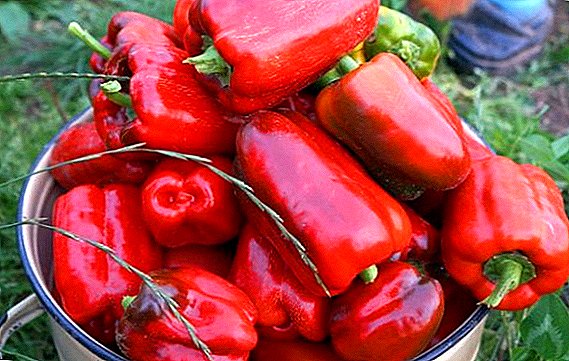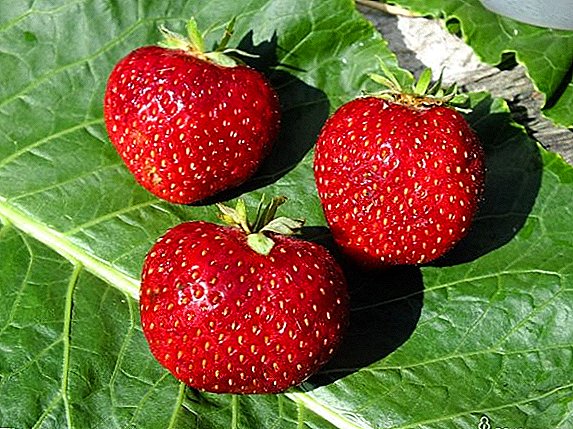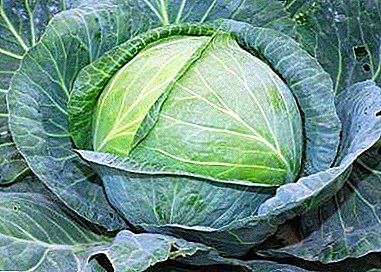
From time immemorial cabbage was considered the most useful plant on the table, so it was she who was given the most attention during planting and maintenance.
Nowadays, cabbage is growing in all gardens of the country, and the abundance of all sorts of varieties, simply amazing. One of the varieties of cabbage, gaining popularity in our time, recognized grade "Sugar Loaf".
Learn about its taste, varietal characteristics, advantages and disadvantages. In the article we will introduce you to the intricacies of growing this useful vegetable, tell you about pest control, harvesting and long-term storage.
Description of the variety from the photo of the plant
This type of plant belongs to the family of Cruciferous, late-ripening varieties. The fruit of the ripened plant has dimensions: 80 cm in diameter and 40 cm in length. The ripening time from planting to harvesting is 170– 190 days, while the weight of one head is about 5 kilograms.
The leaves are light green, round in shape, juicy and soft. Thanks to this property, cabbage can be eaten raw.
The sugar content in the presented vegetable is much higher than in other varieties.. For this quality the plant got its name. Inside the pulp is very dense. The size of the stump reaches 8 centimeters.

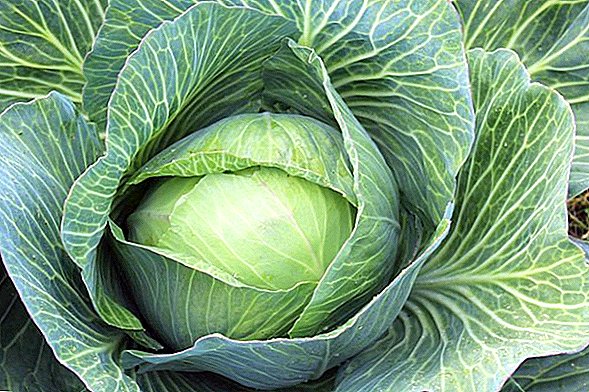
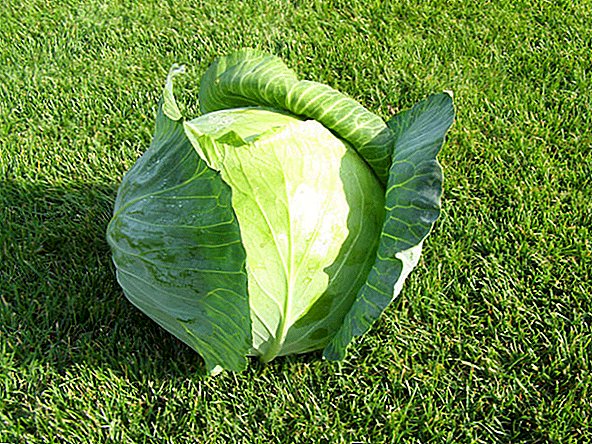
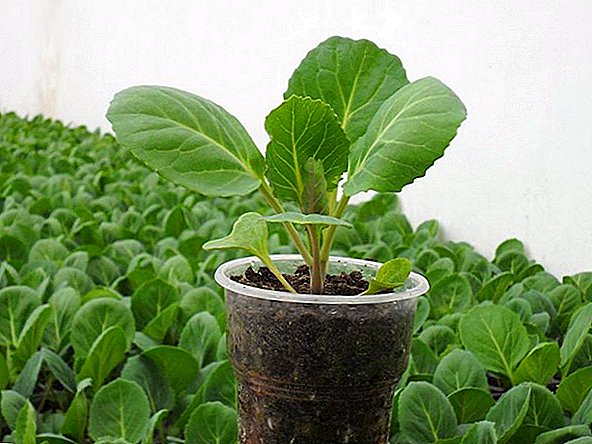
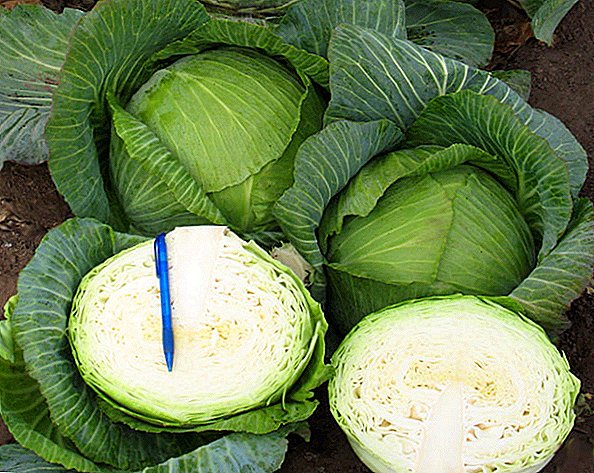
History of
For the first time this variety of cabbage was obtained on the islands and coasts of the Mediterranean Sea. The cultivation of the variety took place in 2008 and it was developed by specialists from a large selective company - Cedek.
Difference from other species
The cabbage variety "Sugar Loaf" has a number of differences from other species:
- high content of vitamins;
- effectiveness in cosmetology procedures; cabbage leaves are added to the composition of various face masks;
- accelerates tissue healing;
- stimulates the function of the thyroid gland;
- removes toxins from the body;
- used in the prevention of various diseases;
- infusions of cabbage variety "Sugar Loaf" are used as mouthwash;
- contains almost all trace elements of the periodic table: phosphorus, iodine, sodium, potassium, calcium, iron;
- the composition contains such beneficial substances as thiamine, riboflavin, folic and ascorbic acid;
- low calorie;
- The presented cabbage variety can be stored for 9 months.
Advantages and disadvantages
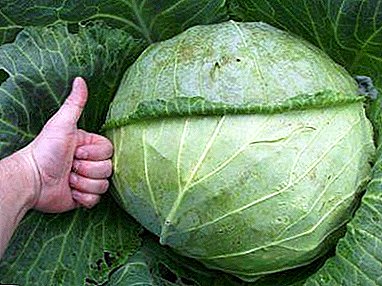 The advantages of cabbage variety "Sugar Loaf" include the following:
The advantages of cabbage variety "Sugar Loaf" include the following:
- taste qualities;
- can be eaten raw;
- large sizes;
- great for pickling;
- cabbage is resistant to temperature and pressure in the environment.
Sugar Loaf is suitable for both pickling and pickling.. This is undoubtedly another feature of the vegetable. Thanks to this cabbage can be harvested for the winter and get a huge amount of vitamins from it during the cold season.
It has one drawback: at any stage of ripening, heads may crack.
Step-by-step instructions for care and landing
With proper planting and care for the cabbage variety “Sugar Loaf”, gardeners are guaranteed a high level of harvest.
To do this, follow a number of rules:
- The soil must be prepared. Namely, heated to a temperature of 15-17 degrees.
- Seed preparation. To do this, soak large cabbage seeds in a solution of potassium humate for 15 days, then rinse and dry. After that, the seeds need to be heat treated to get rid of pests.
- Before sowing seeds, the soil should be fertilized with manure, humus and nutrients.
- After sowing the seeds and the emergence of 3-5 leaves on the seedlings, it's time to transplant the seedlings into open soil.
- Landing should be sunny and constantly warm. You can not plant a plant every year at the same place.
- A transplant is worth doing at the end of May. If you do not have time, it is possible in early June, but not later.
- During the growth of cabbage, you need to periodically fertilize the soil with manure.
- It is necessary to spud the plant regularly, especially after watering and if it has rained.
- Watering the cabbage is necessary several times a month (2-3).
- Constantly should loosen the ground.
- 5 weeks before harvesting, completely stop watering and preferably cover with transparent material from the rain.
 Cabbage seeds can be purchased in stores and markets of the city of Moscow. The average price for one package of seeds is 20 rubles. You can order through the official website on the Internet. But this type of purchase will cost a little more, as the delivery will be taken into account.
Cabbage seeds can be purchased in stores and markets of the city of Moscow. The average price for one package of seeds is 20 rubles. You can order through the official website on the Internet. But this type of purchase will cost a little more, as the delivery will be taken into account.
It is worth picking cabbage when it is fully ripe. It is easy to check, it is enough to touch the head, if it is dense, it means that it is ready to be harvested. Cabbage harvesting usually begins in early November; by this time, the plant has fully gathered nourishing juice and is full of vitamins.
In order to properly collect the cabbage, it is necessary that the weather was dry and sunny, you need to meet in one day.
If you can see that the cabbage is slightly frozen, you should leave it before warming to get away from the cold. For greater preservation, it is advisable to keep the culture with the root.
Crop storage
Heads of cabbage have excellent characteristics of keeping quality. Store this kind of cabbage is in the basement, in a dry place. There should be straw in the box where the plant will be placed. If stored properly, cabbage will be in excellent condition for 9 months..
Diseases and pests
For malicious pests should include:
- Babanuha.
- Spring cabbage fly.
- The flea.
- Whitefish.
- Moth
- Ognevka.
- Common scoop.
- Typical clicker.
- Slugs
- Aphid.
- Bug.
- Medvedka.
All of them are the first enemies of cabbage. They cause enormous damage to the plant. Eats leaves, females lay eggs inside the cabbage, the larvae feed on the roots of the culture.
Prevention methods
To prevent the occurrence of diseases and pests on cabbage, control and prevention methods must be present:
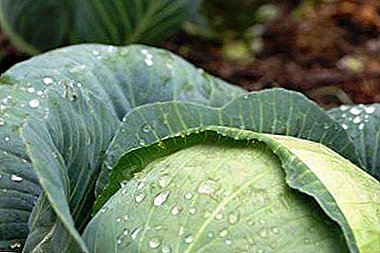 Spraying cabbage with burdock tincture.
Spraying cabbage with burdock tincture.- Water a decoction of tansy 2 times a week in the evenings.
- Weed out beds more often.
- Try to catch pests yourself.
- In the autumn period to produce hilling soil.
- To do inside root dressing.
When caring for cabbage, be sure to remember that it does not tolerate strong soil moisture. therefore care must be taken to prevent water from stagnating in the soil..
We can not allow the plant to be subjected to prolonged exposure to high temperatures, as it is a cold-resistant plant, often hide it in the shade, this can be done by covering a large sheet of burdock.
Seedlings should spend more time under sunlight, because it loves heat more, you need to grow it at a temperature of 7-8 degrees. When transplanting into the soil, the distance between crops should be 30-40 centimeters. The transplant itself, should best occur in cloudy weather. Watering the plant immediately does not need, it is best to do it every other day.
Watch out for pests.. When they first appear in the culture, it is best to collect them in a jar. It is desirable that on the place where the cabbage will grow, eggplants grew last year. They will leave behind fertile soil.
Among all the cabbage varieties, the most respected is the sugar head variety. This variety is very like hostesses, they add it to salads in raw form. The beneficial properties of cabbage keeps itself longer than other varieties. It is also famous for its storage. It is very important to properly care for her and know all the details of the landing. This knowledge will help the plant accumulate more beneficial vitamins and delight your taste on the table.


 Spraying cabbage with burdock tincture.
Spraying cabbage with burdock tincture.